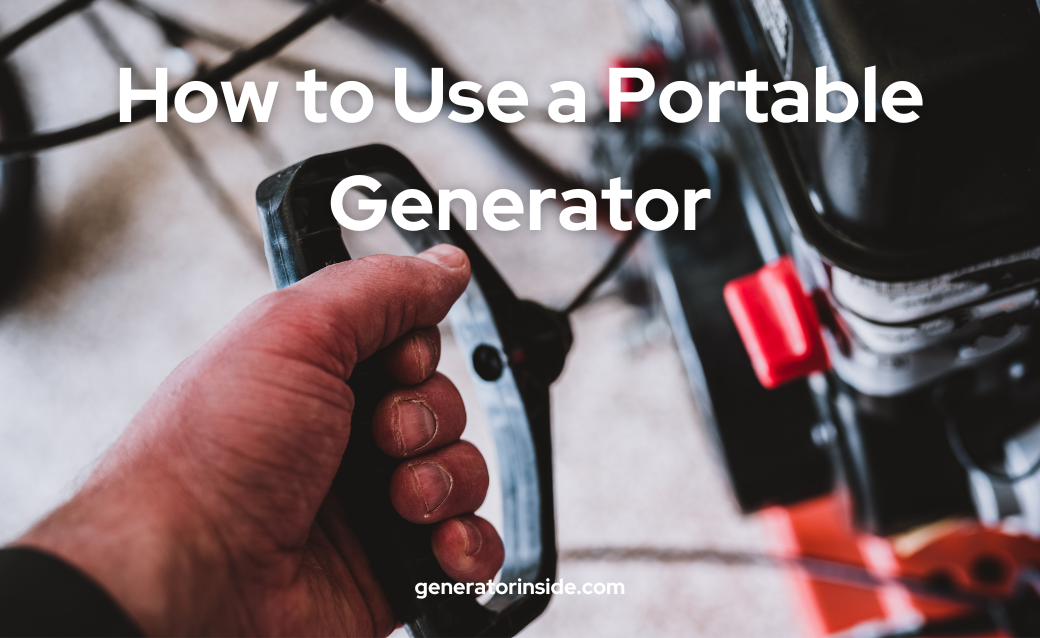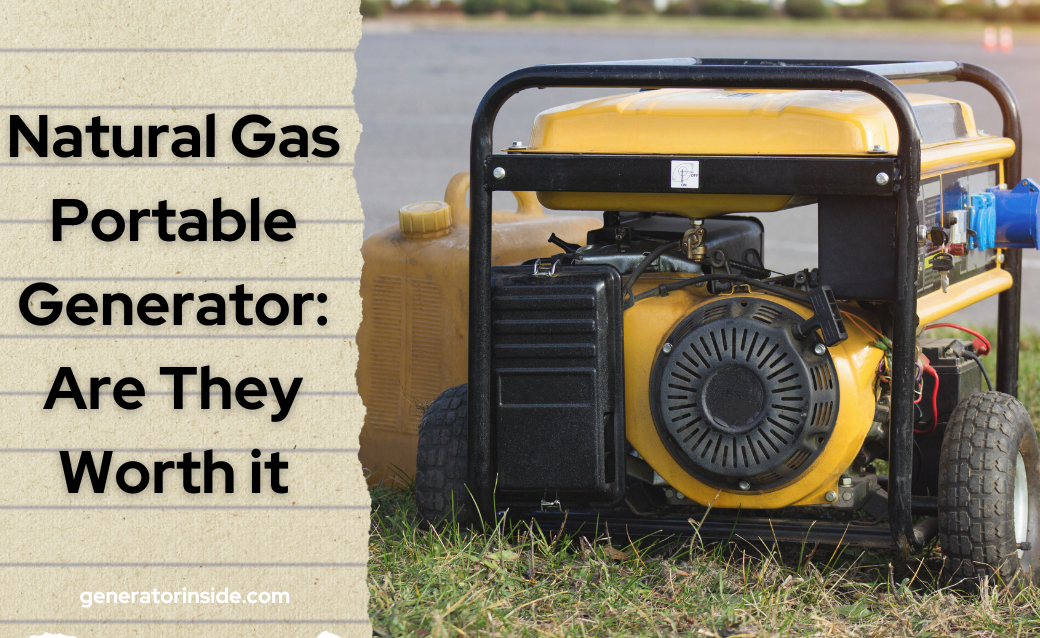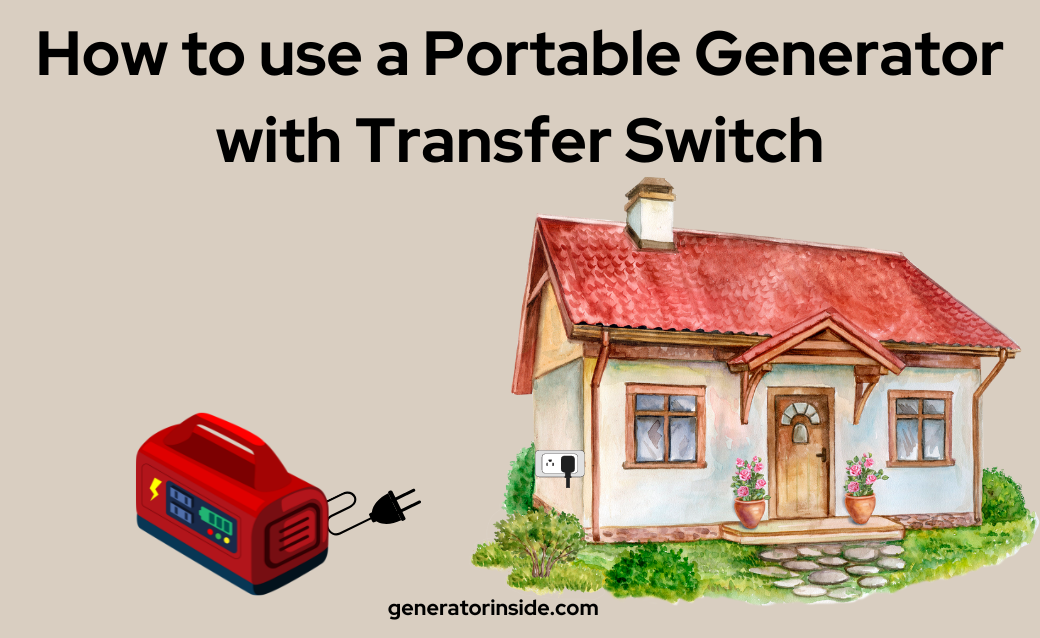
In today’s world, having a reliable source of power is crucial for our daily lives. From keeping the lights on to powering essential appliances, electricity has become an indispensable part of modern living. However, power outages can occur at any time, disrupting our routines and leaving us in the dark. One solution to overcome such challenges is using a portable generator. So, question arises How to Use a Portable Generator?
A portable generator is a versatile, compact, and mobile power source that can provide electricity during power outages, outdoor events, or in remote locations without access to the grid. These generators come in various sizes and capacities, fueled by gasoline, diesel, propane, or natural gas. Their portability makes them an ideal choice for homeowners, campers, and professionals who require a temporary power supply.
What is the Best Way to Use a Portable Generator?
To make the most of your portable generator, it’s essential to understand its specifications, capacity, and proper setup:
1. Generator Capacity: Choose the right generator size based on the total wattage of the appliances you want to power. For example, a 3,500-watt generator can power a refrigerator (700 watts), a microwave (1,000 watts), and several lights (400 watts) simultaneously.
2. Load Management: Be mindful of your generator’s capacity and avoid overloading it. Prioritize essential appliances and stagger their usage, if necessary, to stay within your generator’s limits.
3. Starting Watts vs. Running Watts: Appliances often require more power during startup (starting watts) than when running continuously (running watts). Ensure your generator can handle the peak power demands of your appliances.
4. Safe Setup: Operate your generator outdoors, on a level surface, and at least 20 feet away from your home to prevent carbon monoxide (CO) poisoning. Direct the exhaust away from windows, doors, and vents.
5. Grounding: Follow the manufacturer’s instructions and local regulations for grounding your generator, if required.
6. Fuel Efficiency: On average, a 5,000-watt gasoline generator consumes 0.75 gallons per hour at a 50% load. Opt for a generator with an eco-mode or fuel-saving feature to maximize fuel efficiency.
7. Noise Levels: Portable generators can produce noise levels between 60 and 80 decibels (dB) at 23 feet (7 meters). Consider a generator with noise-reduction features, such as an enclosed design or a muffler, to minimize disturbance.
8. Extension Cords and Transfer Switches: Use heavy-duty, outdoor-rated extension cords for connecting your generator to appliances. Alternatively, install a manual transfer switch to safely connect your generator to your home’s electrical panel.
9. Regular Maintenance: Perform routine maintenance, such as changing oil and air filters, inspecting spark plugs, and checking fuel lines, to ensure your generator runs efficiently and reliably. Change the oil after the first 20 hours of use, and every 50 to 100 hours thereafter.
How to Safely Set up your Portable Generator?
- Choose a secure location: Since gasoline-powered portable generators emit carbon monoxide gas, it’s crucial to operate them outdoors and at least 20 feet away from your house. Make sure the engine exhaust is directed away from any windows, doors, air-conditioning units, or other openings into your home.
- Identify the appliances you can power: Without a transfer switch, you’ll need to use the generator’s built-in outlets to connect extension cords to specific appliances and electronic devices.
- Utilize appropriate extension cords: Select heavy-duty extension cords that are designed for outdoor use and have a wire gauge capable of handling the electrical current generated by your portable generator.
- Handle fuel with care: Store gasoline in an approved container, and ensure it is kept away from heat sources or open flames.
How to Use a Portable Generator?
1. Consult the manual – Prior to using your generator, thoroughly read the accompanying manual to learn how to use it safely and effectively.
2. Select an appropriate location – Position the generator on a level surface at a minimum distance of 20 feet from your house or any other structure to avoid carbon monoxide poisoning.
3. Fill with fuel – Add fuel to your generator as per the manufacturer’s guidelines.
4. Activate the generator – Follow the manufacturer’s instructions to turn on your generator.
5. Connect devices – Attach your devices to the generator using extension cords.
6. Deactivate the generator – Once you have finished using the generator, switch it off and allow it to cool down before storing it away.
To Power your House using a Portable Generator?
- Determine your power needs
Make a list of the essential appliances and devices you want to power during an outage. Calculate the total wattage required by adding up the running watts of each appliance. Also, consider the starting watts, as some appliances may need more power when starting up.
- Choose the right generator
Select a portable generator with enough capacity to handle your power needs. Generators are available in a range of sizes, from small units with around 1,000 watts to larger ones with more than 20,000 watts.
- Set up the generator safely
Place the generator outdoors on a level surface, at least 20 feet away from your home. Ensure the exhaust is directed away from windows, doors, and air vents to avoid carbon monoxide poisoning.
- Connect your generator to your home
- Extension cords: You can use heavy-duty, outdoor-rated extension cords to connect individual appliances directly to the generator. Plug the cords into the generator’s outlets, and then connect the appliances.
- Transfer switch: A safer and more efficient option is to use a transfer switch, which allows you to connect the generator to your home’s electrical panel. A manual transfer switch must be professionally installed by an electrician. Once installed, you can switch between utility power and generator power by turning the transfer switch on or off.
- Turn on the generator
Follow the manufacturer’s instructions to start the generator. Allow it to run for a few minutes before connecting appliances.
- Power your appliances
Turn on the essential appliances and devices you want to use. Be mindful not to exceed the generator’s capacity.
- Monitor the generator
Regularly check the generator’s fuel levels, temperature, and performance while it is running. Refuel the generator when needed, but make sure to turn it off and let it cool down before refueling.
- Turn off the generator
Once you’re finished using the generator, follow the manufacturer’s instructions to turn it off. Allow it to cool down before storing it.
How to Maintain a Portable Generator?
- Change the oil regularly. This is one of the most important things you can do to keep your generator running smoothly. Most generators require an oil change every 25 to 50 hours of use. Be sure to use the type of oil recommended by the manufacturer.
- Check the air filter regularly. A dirty air filter can restrict airflow and cause the generator to run less efficiently. Check the air filter every time you use the generator, and replace it if it is dirty or damaged.
- Clean the spark plug regularly. A dirty spark plug can cause misfires and reduce the power output of the generator. Clean the spark plug with a wire brush every time you use the generator, and replace it if it is damaged.
- Store the generator in a cool, dry place. This will help to prevent corrosion and other damage. If you will not be using the generator for an extended period of time, be sure to drain the fuel tank and add a fuel stabilizer.
- Have the generator serviced by a qualified technician at least once a year. This will help to ensure that the generator is in good working condition and will last for many years.
How to Maintain a Portable Generator?
- During power outages: A generator can supply electricity for all your needs when the grid goes down.
- Remote job sites: Portable generators provide power for tools and equipment at worksites with limited access to electrical outlets.
- RV trips: Carrying a portable generator during RV excursions ensures a convenient source of power at stops without hookups.
- Camping adventures: Enhance your camping experience by using a portable generator to power lights, fans, and other electronic devices.
- Tailgating parties: Power your TV, radio, and other electronics with a portable generator during tailgate events.
- Outdoor functions: Use portable generators to supply electricity for outdoor gatherings such as weddings, concerts, and festivals.
- Farming and ranching: Portable generators can be valuable assets for farmers and ranchers, providing power for fences, pumps, and other essential equipment.
Also Read:
How To Run a Hydrogen Power Generator to Power Your House?
How to Use a Generator During a Power Outage
What is a Small Portable Generator
How Much Does a Generac Solar Generator Cost
What type of Solar Power Generator for Home are best in 2023













